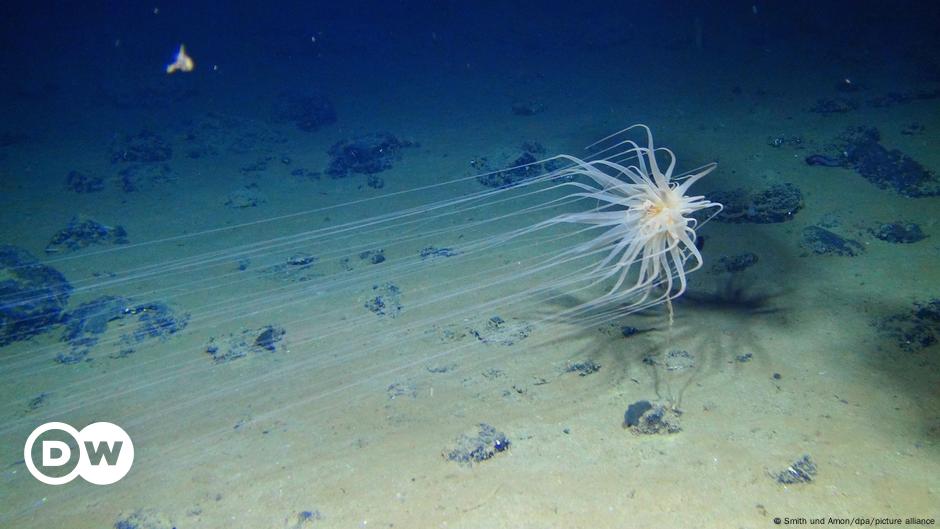In the depths of the Pacific Ocean, off the coast of Mexico, scientists discovered that oxygen did not come from organisms, but polymetallic nodules, a type of pebble, which calls into question the theory of the origin of life. A study.
Apart from photosynthesis, this strange “black oxygen” is produced in the valley plains of the Clarion-Clipperton Fracture Zone in the central Pacific off the west coast of Mexico, at depths greater than 4,000 meters.
Polymetallic nodules are mineral concretions rich in metals (manganese, copper, cobalt…), much preferred by the industrial sector for the production of batteries, wind turbines or photovoltaic panels.
A vessel from the Scottish Association for Marine Sciences (SAMS) carried out sampling in the area to assess the impact of metal prospecting on the ecosystem, which is home to unique animal species that survive without light.
Transformation without photosynthesis
“We tried to measure oxygen consumption on the ocean floor using so-called benthic chambers,” Andrew Sweetman, first author of the published study, said. Natural Earth Sciences.
The process consists of placing these beads on ocean sediments and observing how the oxygen concentration in the water inside decreases as they are absorbed by the organisms' respiration.
But the opposite happened: “Without photosynthesis, in total darkness, oxygen increased in the water above the sediments,” explains Sweetman, head of the Undersea Ecology and Biochemistry Research Group at SAMS.
They rule out errors in measurement
Surprisingly, the researchers thought their underwater sensors were returning false data.
Experts tested their ship again to see if the same thing happened on the surface. Once again, they observed that in total darkness, oxygen increased in those sediment samples.
“We found that the voltage on the surface of the nodules was similar to that of an AA battery,” explained Sweetman, who likened the nodules to “batteries inside rocks.”
These surprising properties may be the origin of the process of water electrolysis, which uses electricity to split its molecules into hydrogen and oxygen.
This chemical reaction occurs from 1.5 volts, usually the charge of an AA battery, which can reach the knots when they are grouped together, explains a statement from the SAMS association attached to the study.
“The discovery of oxygen production by a process other than photosynthesis leads to a rethinking of how life arose on Earth,” said Nicholas Owens, director of SAMS.
Interplanetary mode?
The “conventional” view is that oxygen “was first produced by cyanobacteria about 3 billion years ago, which led to the development of more complex organisms,” explains the scientist.
“Life may have started elsewhere than on land and ocean surfaces. Since this process is present on our planet, it could create oxygenated habitats on other 'sea worlds' like Enceladus. Europe (moons of Saturn and Jupiter respectively),” and create the conditions for the emergence of extraterrestrial life, suggests Professor Sweetman.
According to him, the study will allow “better regulation” of deep-sea mining based on more accurate environmental information.
(AFP, Natural Earth Sciences)





:quality(85)/cloudfront-us-east-1.images.arcpublishing.com/infobae/KTKFKR763RBZ5BDQZJ36S5QUHM.jpg)